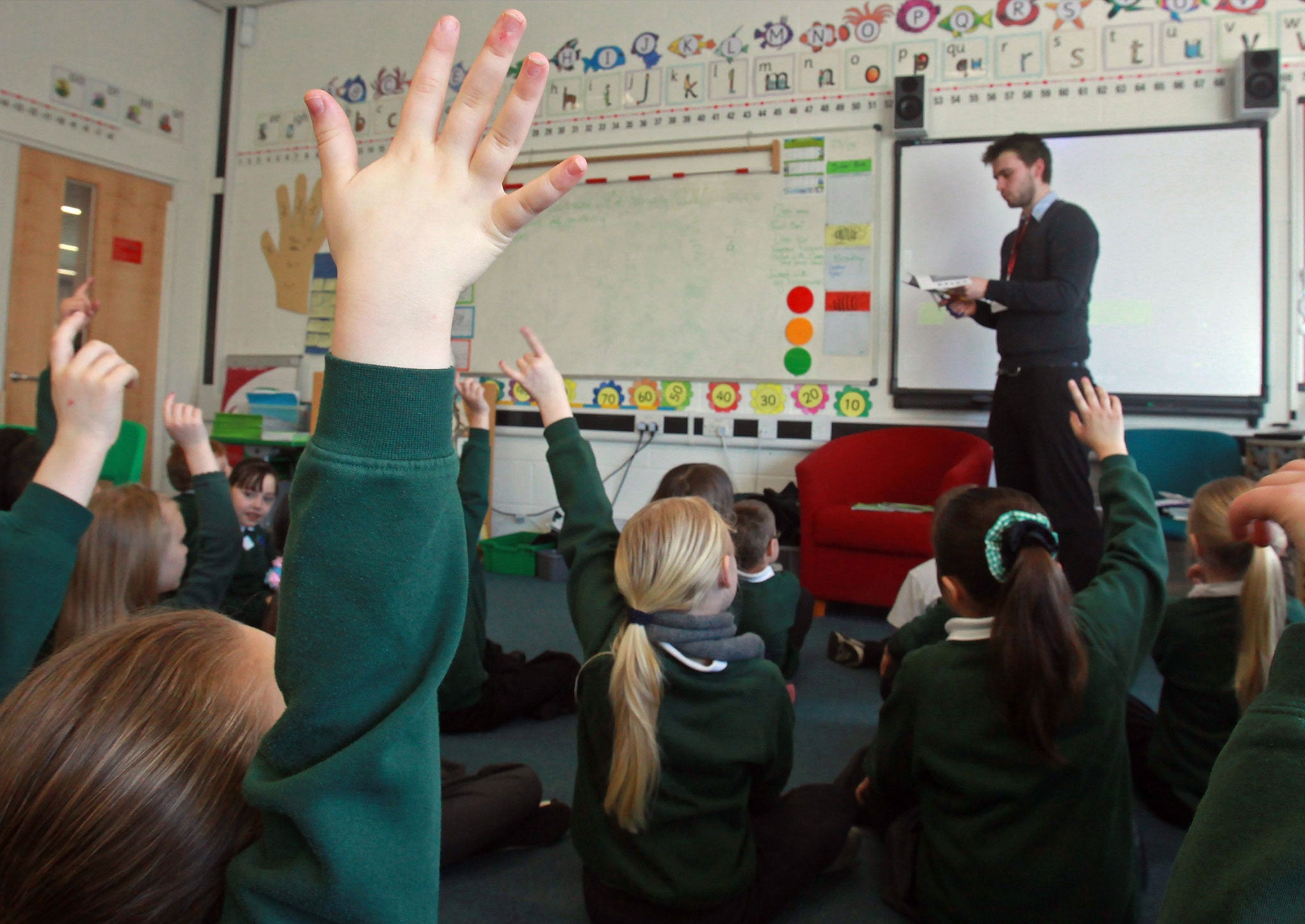Better-off parents excel at playing the state-school system. It’s right to give others a chance to do so
The middle classes might grumble, but a bit of re-prioritising wouldn’t go amiss


Even in the “free” state education system, throwing a bit of money at your child’s schooling makes all the difference. Pupils from affluent backgrounds can get better-quality uniforms, after-school tennis and piano lessons, extra tuition in maths and French, iPads for help with homework … the list of how to gild your son or daughter’s education is seemingly endless. Not forgetting the most important way to get your child a place at the best state schools – paying a premium for a home nearby.
This seems grossly unfair, yet every family who can afford to spend money on tilting the playing field a little towards them does it anyway. Who wouldn’t? Now the Government is considering evening out the field a little by letting schools prioritise pupils from poorer backgrounds in return for more state funding. This practice is already permitted in free schools and self-governed academies, but now the Government wants to give all schools the opportunity to do so.
Notwithstanding admission rules that put children with special needs or those with siblings already at the school at the front of the queue, those families who live closest are next in line. Under the proposed new rules, low-income families would instead be given priority and those children would attract £1,300 of pupil premium funding for each primary school place, or £935 for secondary. The Department for Education says changing admissions rules will improve the “fair and open allocation of school places and ensure every child receives a first-class education”.
Of course, we all want every child to receive a first–class education. But there could be problems with this radical shake-up of admissions. While the current rules on distance may give an unfair advantage to parents who can afford the mortgage on a home near a good or outstanding institution, it is important that children go to their nearest school. The story of Olivia Stowe, a four-year-old whose daily school run involves four hours on 12 buses because she couldn’t get a place at an over-subscribed school 10 minutes away, is an extreme, nightmare scenario, but other families across the country are forced to similarly lengthy commutes. This is disruptive to children and is questionable in terms of public health – because surely walking to school is the best form of transport for youngsters. It’s also best for the environment, as many spurned middle-class families would simply do the school run in their cars to get to a place miles away. It is also possible that introducing more means-testing into school admissions creates perverse incentives.
I wonder whether the DfE is doing this to prepare the ground for another problem. From September, free school meals will be available to all schoolchildren in England under the age of eight. While, as I’ve written before, this is a laudable policy, I have heard of anecdotal evidence in my local London borough of Southwark - where universal free school meals have been in place for the past year - that schools are losing pupil premium funding because those children who would normally be eligible no longer need to actively request free school meals.
Some weeks ago, the DfE denied this would happen, but it has come to pass. When applying for a free school meal carries a certain stigma, many parents don’t want to declare their “poor” status when the meals are available to all. This unintended consequence could pose a serious problem countrywide by this time next year. So it is possible ministers are trying to ensure that the pupil premium is still being diverted to the poorest children.
Despite my reservations, I am surely just repeating the self-pitying wail of the middle-class parent. It is ok for me, I hear you say, whose daughter will go to a good school near home from September, and who does not need to worry about the cost of her first uniform. When the state education system is gamed so successfully by the middle classes, something has to change. Private education may seem unfair to many, but inequality is rife across state schools too. Of course, parents who can afford it should be free to spend what they want on those additional extras. Yet while admission rules are dominated by house prices and proximity to the best schools, poor children are being failed. The pupil premium is an excellent policy that should be extended, and perhaps the only way to do this is to put those eligible at the front of the admissions queue.
Another way that would not lead to a total upheaval could be to introduce quotas – as many self-governing academies do now – with up to 50 per cent of places going to poor children. Free schools – as long as they are good and are in areas where there is demand – can also redress the balance by relieving pressure on places. Or why not remove location and money from the equation altogether and introduce a ballot over larger catchment areas? The school system often feels like a lottery anyway.
Of course, the focus should not just be on admissions but on striving for excellence and leadership in headteachers, who are the most important factor in whether a school is on the way up or down. Whatever the solution is, it is right that the state helps poorer children get the best education and, like most middle-class parents already do, throw a bit of money at it.
Shifting trends bite at Crocs, but I’ll have mine forever
A decade ago, they were the only footwear to be seen in on the beach or pottering round the garden. Now Crocs have lost their fashionable allure and the firm that makes them is laying off 180 jobs and closing 100 stores worldwide after profits fell by 40 per cent. Are they to become the Noughties version of the jelly shoe, those 1980s must-have plastic sandals that have faded from fashion like a deckchair in the sun? I hope not. Because unlike jelly shoes, whose straps would break if they got too wet and always left me with blisters, their 21st century cousins are sturdy and comfortable. Unlike flip-flops, you don’t stub your toe in Crocs. Waterproof and unbreakable, I’ve had the same pair for several years. Maybe that’s the problem – they haven’t fallen out of fashion, it’s just nobody needs to buy more than one pair in their lifetime.
Join our commenting forum
Join thought-provoking conversations, follow other Independent readers and see their replies
Comments